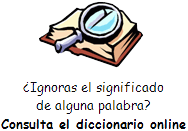Today we are
going to look at the progressive verb tenses. Progressive tenses express
actions that are unfinished or in progress. There are three progressive
verb tenses: the past progressive, the present progressive, and the
future progressive. Progressive tenses are the same as continuous
tenses.
| |
|
past |
|
present |
|
future |
| Progressive Verbs |
|
It was snowing when I
drove to work.
Was/were + -ing verb |
|
It is snowing.
Am/is/are+-ing verb |
|
It will be snowing by
the time I get home.
Will be + -ing verb |
Present Progressive
We will start with the present progressive, the most common progressive
tense. You form the present progressive tense by using a form of the
verb be followed by an –ing verb. For example, “I am watching a movie.”
It is easy to confuse the simple present and the present progressive.
What’s the difference between, “It rains in Seattle” and “It is raining
in Seattle”?
“It rains in Seattle” states that it rains in general. It does not
necessarily mean that it is raining at the moment of speaking. “It is
raining in Seattle” means that the rain started in the past, is
happening now, and will probably continue into the future.
Now, at this time, and currently are common adverbs in the present
progressive.
The present progressive can also express a scheduled event in the future.
For example, this sentence is in the present progressive: “She is
starting school next semester.”
The meaning here is the same as the sentence in the simple future: “She
is going to start school next semester.” The present progressive and
simple future (with be going to) sometimes have the same .
You can also use present progressive with always to say that something
disturbs you. “My neighbor is always playing loud music at night” or “I
am always making mistakes with verb tenses!”
Past Progressive
Let’s move on to the past progressive. The past progressive describes an
event that was in progress in the past. To form the past progressive use
was or were followed by an –ing verb. For example, “I was working late
last night.”
Sentences in the past progressive often have two actions.
For example, “It was snowing when the plane landed in Denver.”
Notice that the second action, landed, is in the simple past.
The past progressive can also express an action in progress interrupted
by a second action. “I was running when I slipped and fell” or “I was
sleeping when you called.”
It is possible to have two progressive actions in the same sentence if
the two actions are happening at the same time. You could say, “I was
sleeping when you were working”.
Future Progressive
The future progressive tense describes an event that will be in progress
in the future. To form the future progressive tense, use will be
followed by an –ing verb. For example, “I will be waiting for you when
you finish work.”
The future progressive can be useful when you are making plans. Imagine
your friend wants you to pick her up the airport tomorrow. But you have
to work.
You could tell her, “I’m sorry, but I will be working when your plane
gets in.”
You can learn more about future tenses in this previous episode of
Everyday Grammar.
Stative Verbs
There are some verbs that cannot be used in any of the progressive
tenses. You would say “I own a car,” not “I am owning a car.” Own is a
stative verb. Stative verbs describe unchanging conditions or situations.
Stative verbs often refer to mental states such as know, realize, like,
believe, understand, love, hate, appear, and exist.
A few verbs have both stative and non-stative meanings. Let’s look at
the verb think. “I think the book is good” is stative. The action does
not change. “I am thinking about you” is progressive. It shows a
temporary, changing action. Sensory verbs like see, taste, feel, smell,
and hear work the in the same way.
Progressive verbs are especially useful for describing changing
emotional states. For that reason, they are very common in song lyrics.
|
 Sugerencias:
Sugerencias:![]() ). Utiliza el botón derecho del ratón y "guardar enlace" para
descargar el fichero a tu PC, tablet, Smartphone, etc.
). Utiliza el botón derecho del ratón y "guardar enlace" para
descargar el fichero a tu PC, tablet, Smartphone, etc.
![]() Escucha el audio
Escucha el audio
![]() ¿Quieres recibir en tu e-mail gratis y
periódicamente ejercicios, programas gratuitos, explicaciones y otros recursos
para mantener tu inglés sin esfuerzo? Apúntate a nuestro
cuaderno mensual de inglés.
¿Quieres recibir en tu e-mail gratis y
periódicamente ejercicios, programas gratuitos, explicaciones y otros recursos
para mantener tu inglés sin esfuerzo? Apúntate a nuestro
cuaderno mensual de inglés.




